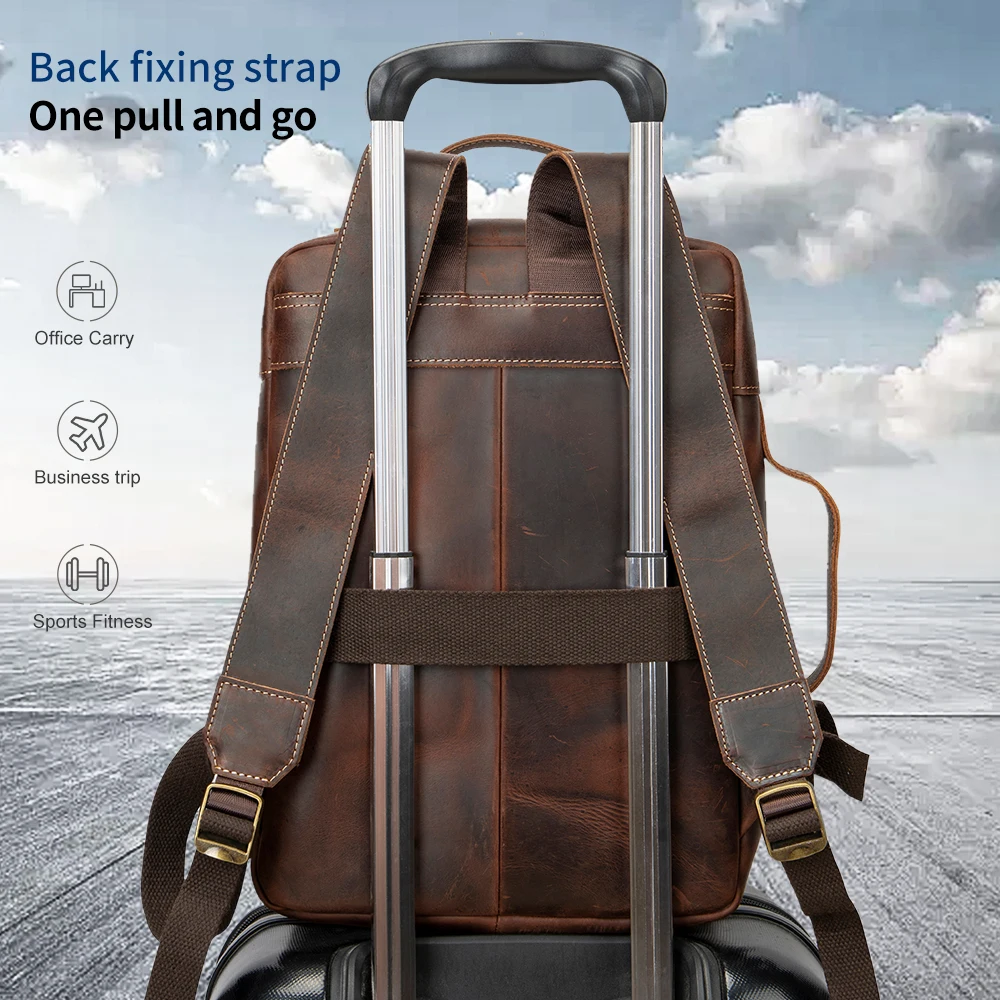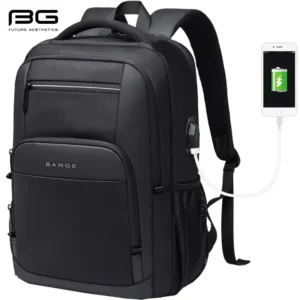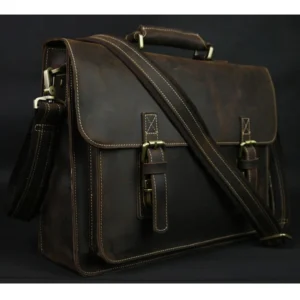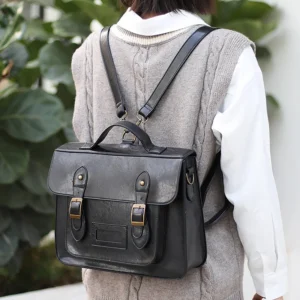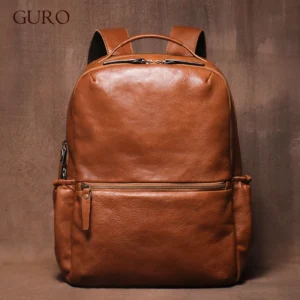Understanding Leather Quality: The Foundation of a Long-lasting School Bag
When it comes to carrying your books, laptop, and other essentials day after day, the quality of your bag matters tremendously. A durable leather bag isn’t just an accessory—it’s the reliable companion that protects your educational tools through rain, campus crowds, and countless trips between classes.
The foundation of any truly durable leather bag lies in its material quality. Unlike synthetic alternatives that might look good initially but quickly show wear, high-quality leather actually improves with age, developing a unique character that tells the story of your academic journey. This is why leather bags represent an investment rather than just a purchase.
The difference becomes clear when we consider longevity: while synthetic bags typically need replacement every 6-18 months with daily student use, a well-made leather bag can last through your entire academic career and beyond—often 5-10+ years with proper care. This longevity transforms what might seem like an expensive purchase into a smart long-term investment.
Choosing a durable leather bag also aligns with more sustainable consumption habits. Rather than cycling through multiple cheaper bags that ultimately end up in landfills, investing in one quality piece reduces waste and environmental impact over time.
Key points to remember:
– Quality leather improves with age and use
– Superior durability means fewer replacements over time
– Long-term investment saves money despite higher upfront cost
– More sustainable than repeatedly buying lower-quality alternatives
Understanding fashionable leather backpacks for students helps you make better choices that balance style with practicality. As we explore further, we’ll examine exactly what makes certain leathers more durable than others, and how to identify the differences when shopping.
Before diving deeper into specific types, it’s important to understand that leather quality exists on a spectrum, with significant differences in leather types for durable bags that directly impact how they’ll hold up to the demands of student life.
Types of Leather and Their Durability Ranking for Student Life
Not all leather is created equal, especially when it comes to withstanding the daily rigors of student life. Understanding the different types helps you make an informed decision about which bag will actually last through your academic journey.
Full-Grain Leather
At the top of the durability pyramid sits full-grain leather. This premium material includes the entire top layer of the hide with all its natural grain intact, making it exceptionally strong and resistant to wear. For students, this translates to:
- Superior resistance to moisture and spills (though not completely waterproof)
- Exceptional tensile strength that prevents tearing under heavy loads
- Natural ability to develop a beautiful patina that improves with age
- Resistance to scratches and surface damage common in crowded hallways
The thickness of full-grain leather (typically 2.0-4.0mm) provides structural integrity that maintains the bag’s shape even when loaded with textbooks and technology. While it represents the highest investment initially, full-grain leather backpacks offer unmatched longevity for daily class use.
Top-Grain Leather
The second-highest quality option, top-grain leather offers a good balance between durability and cost. It’s created by sanding down the upper layer of the hide to remove imperfections, resulting in:
- Good resistance to daily wear and tear
- More uniform appearance than full-grain
- Lighter weight for easier carrying between classes
- More affordable price point while maintaining good durability
Many students find that full grain leather is better for backpacks than top-grain alternatives, particularly if they carry heavy loads or need a bag that will last throughout their entire college career.
Genuine Leather
Despite its authentic-sounding name, genuine leather represents a lower quality tier. Made from the layers remaining after the top portions are used for higher-grade products, it offers:
- Moderate durability suitable for light to moderate use
- More affordable price point
- Less resistance to moisture and environmental factors
- Shorter lifespan, typically 1-3 years with daily student use
Bonded Leather
At the bottom of the quality spectrum, bonded leather is essentially the “particle board” of leather products. Made from shredded leather scraps bonded together with adhesives, it’s unsuitable for students who need reliable daily performance:
- Prone to peeling and surface deterioration within months
- Poor resistance to moisture
- Limited structural integrity under weight
- Shortest lifespan, often less than a year with regular use
| Leather Type | Durability Rating (1-10) | Expected Lifespan with Daily Student Use | Best For |
|---|---|---|---|
| Full-Grain | 9-10 | 5-10+ years | Long-term investment, heavy daily use |
| Top-Grain | 7-8 | 3-6 years | Good balance of quality and affordability |
| Genuine | 4-5 | 1-3 years | Occasional use, limited budgets |
| Bonded | 1-2 | Less than 1 year | Not recommended for students |
When examining leather bags in person, look for thickness, grain patterns, and how the material feels to the touch. Quality leather has a distinctive smell and supple feel that synthetic or lower-grade options cannot replicate.
Tanning Processes: How They Impact Your Bag’s Longevity
The way leather is tanned fundamentally affects its durability and performance characteristics—an important consideration for students selecting a bag for daily use. Understanding these differences helps you choose a bag that meets your specific needs.
Vegetable-Tanned Leather
This traditional process uses natural tannins from plants and produces leather with distinct advantages:
- Exceptional durability that improves with age
- Natural resistance to stretching and sagging under weight
- Develops a beautiful patina over time
- More environmentally friendly production process
- Distinctive natural smell
The primary consideration for students is that vegetable-tanned leather typically starts out quite stiff and requires a break-in period of 2-4 weeks. However, it gradually molds to your carrying habits, becoming more comfortable over time.
Chrome-Tanned Leather
More common in modern leather goods, chrome tanning offers different benefits:
- Immediate suppleness and flexibility out of the box
- Better initial water resistance
- More consistent coloring and appearance
- Shorter break-in period
- Greater resistance to staining
For students who face unpredictable weather or need immediate flexibility, chrome-tanned leather offers practical advantages despite its somewhat shorter lifespan compared to vegetable-tanned options.
Combination-Tanned Leather
Many premium student bags utilize combination tanning, which employs both methods to create leather with:
- Enhanced flexibility while maintaining structural integrity
- Good water resistance without sacrificing breathability
- Balanced break-in period of 1-2 weeks
- Improved resistance to both environmental factors and weight stress
When selecting a leather bag for classes, consider the specific demands of your campus environment. If you’re frequently outdoors in variable weather, chrome or combination tanning might serve you better. For maximum longevity and classic appearance, vegetable-tanned leather represents the premium choice.
Construction Elements That Define a Truly Durable Bag
Beyond leather quality, the construction details of your bag determine how it will hold up to daily student demands. When evaluating potential bags, pay close attention to these critical elements:
Stitching Quality
The strength of a bag’s stitching often determines its ultimate durability:
- Look for tight, even stitching with 5-7 stitches per inch
- Double stitching at stress points provides essential reinforcement
- Thick, waxed thread resists moisture and abrasion better than standard threads
- Saddle stitching (two needles working through the same hole from opposite directions) offers superior strength for handles and straps
A quality bag will have no loose threads, skipped stitches, or uneven tension, all of which indicate potential future failure points.
Hardware Quality
The metal components of your bag face constant use and stress:
- Solid brass or stainless steel hardware resists corrosion and maintains appearance
- YKK or similar high-quality zippers prevent frustrating failures between classes
- Buckles should feature smooth action with no rough edges
- D-rings and attachment points should be securely riveted or stitched, never glued
Quick test: quality hardware has substantial weight, smooth finishing, and operates without catching or sticking.
Stress Point Reinforcement
Certain areas of a student bag endure particular stress and should feature additional reinforcement:
- Strap attachment points need multiple layers of leather and reinforced stitching
- Bottom corners benefit from metal corners or extra leather patches
- Handle bases should have substantial backing and multiple attachment points
- Zipper endpoints require additional stitching or rivets to prevent tearing

Edge Treatment
The treatment of leather edges significantly impacts durability:
- Burnished edges (polished until smooth and sealed) resist fraying and moisture
- Folded and stitched edges provide superior strength for straps
- Painted edges should have multiple coats for adequate protection
- Raw edges indicate poor construction and will deteriorate quickly
For students carrying heavy loads daily, these construction details make the difference between a bag that lasts for years and one that fails mid-semester. Leather laptop backpacks designed for daily student use incorporate these durability features while also providing specialized protection for your devices.
Design Features Essential for Student Demands
The perfect leather bag for classes combines durability with student-specific functionality. These design features directly address the unique demands of academic life:
Optimized Capacity: A bag for daily classes should offer 20-25 liters of capacity—enough to carry textbooks, notebooks, and technology without becoming unwieldy. The main compartment should accommodate standard textbooks (approximately 11×9 inches) plus additional materials.
Intelligent Weight Distribution: Look for padded, contoured shoulder straps at least 2 inches wide that distribute weight evenly. A padded back panel prevents uncomfortable pressure points during long days on campus, while sternum straps help manage heavier loads.
Technology Protection: Dedicated laptop compartments with padding on all sides, including the bottom, protect your most valuable tools. The sleeve should be sized appropriately for your device (typically 13-17 inches for most students) and suspended slightly above the bottom to absorb impact if the bag is set down firmly.
Organizational Efficiency: Between-class transitions require quick access to different materials. Look for:
– Quick-access front pockets for phone, ID, and frequently needed items
– Internal dividers to separate materials for different courses
– Pen holders and small pockets for accessories
– Water bottle pockets for staying hydrated throughout long class daysWeather Readiness: While leather offers natural water resistance, additional features enhance protection:
– Covered zippers or storm flaps prevent water intrusion
– Roll-top or flap-over designs provide added protection from rain
– Water-resistant linings contain spills and protect from external moisture
Finding leather school bags with laptop compartments that include these specialized features ensures both protection for your technology and organization for your academic materials.
For students juggling multiple courses, extracurricular activities, and perhaps part-time work, these features in student-friendly leather bags translate to real-world convenience and efficiency during hectic days.
The Long-Term Value Proposition: Cost-Benefit Analysis
While the initial price of a quality leather bag might cause sticker shock, analyzing the long-term economics reveals a different picture:
| Bag Type | Initial Cost | Expected Lifespan | Annual Cost | Total 4-Year Cost |
|---|---|---|---|---|
| Quality Full-Grain Leather | $150-300 | 5-10+ years | $15-60 | $150-300 |
| Mid-Range Synthetic | $50-80 | 1-2 years | $25-80 | $100-320 |
| Budget Option | $20-40 | 6-12 months | $20-80 | $80-320 |
This comparison illustrates the counterintuitive truth: the most expensive option initially often becomes the most economical over time. The quality leather bag requires one purchase rather than multiple replacements, resulting in comparable or lower total costs over a typical 4-year college career.
Beyond direct costs, leather bags offer additional value advantages:
Versatility Value: Quality leather transitions seamlessly from classroom to internship to first job, eliminating the need for separate bags for different settings.
Repair Economics: Unlike synthetic bags that are typically discarded when damaged, leather bags can be repaired. A simple professional repair (typically $20-50) extends life rather than requiring complete replacement.
Residual Value: Well-maintained leather bags retain value and can even be resold when no longer needed, recouping some of your initial investment.
This value analysis doesn’t even account for the frustration and inconvenience of bag failures—often occurring at the worst possible moments, such as during finals week or before important presentations.
Essential Maintenance for Maximum Longevity
Proper care transforms a good leather bag into a long-term companion. Fortunately, effective leather maintenance doesn’t require complex routines—just consistent basic care:
Quick Daily/Weekly Care
- Wipe down with a dry cloth after daily use to remove dust and dirt
- Remove any spills immediately by blotting (not rubbing) with a clean cloth
- Empty completely at least weekly to remove accumulated debris
- Allow to dry naturally if exposed to rain (never use direct heat)
Seasonal Deep Care (2-4 times yearly)
- Clean with a leather-specific cleaner using a soft cloth
- Apply leather conditioner to prevent drying and cracking
- Use waterproofing products appropriate for your specific leather type
- Pay special attention to stress points, handles, and straps
Storage During Breaks
- Clean thoroughly before extended storage
- Stuff with acid-free paper to maintain shape
- Store in a breathable cloth bag, never in plastic
- Keep in a temperature-controlled environment away from direct sunlight
Using the right types of leather cleaners for backpacks ensures you’re protecting rather than damaging your investment. Generally, pH-balanced cleaners specifically formulated for leather provide the best results without harsh chemicals that can strip natural oils.
For students concerned about maintenance complexity, remember that quality leather actually requires less frequent intervention than cheaper materials that need constant attention to maintain appearance. A simple maintenance routine performed consistently yields the best results.
Material Comparison: Why Leather Stands Out for Daily Classes
When selecting a bag for daily classes, understanding how different materials perform under student conditions helps clarify why quality leather often emerges as the superior choice:
| Material | Durability | Weight | Weather Resistance | Maintenance | Aesthetic Aging |
|---|---|---|---|---|---|
| Full-Grain Leather | Excellent (5-10+ years) | Moderate-Heavy | Good with proper care | Moderate | Improves with age |
| Nylon | Good (2-4 years) | Light | Excellent | Low | Fades and frays |
| Canvas | Moderate (2-3 years) | Light-Moderate | Poor unless treated | Moderate | Wears visibly |
| Polyester | Fair (1-2 years) | Light | Good | Low | Degrades visibly |
| Synthetic Leather | Poor (6-18 months) | Light | Fair | Low | Cracks and peels |
Beyond these specifications, each material offers distinct advantages and disadvantages for student use:
Leather Advantages:
– Develops character rather than simply wearing out
– Natural resistance to abrasion from daily handling
– Structural integrity maintains shape even when fully loaded
– Professional appearance transitions well to internships and interviews
– Natural resistance to odors even after extended use
Leather Considerations:
– Requires some basic maintenance
– Higher initial cost
– Generally heavier than synthetic alternatives
– Varied response to water exposure based on leather type and treatment
Leather vs. canvas student bags represent a common comparison, with leather offering superior longevity and professional appearance while canvas provides lighter weight and often lower cost.
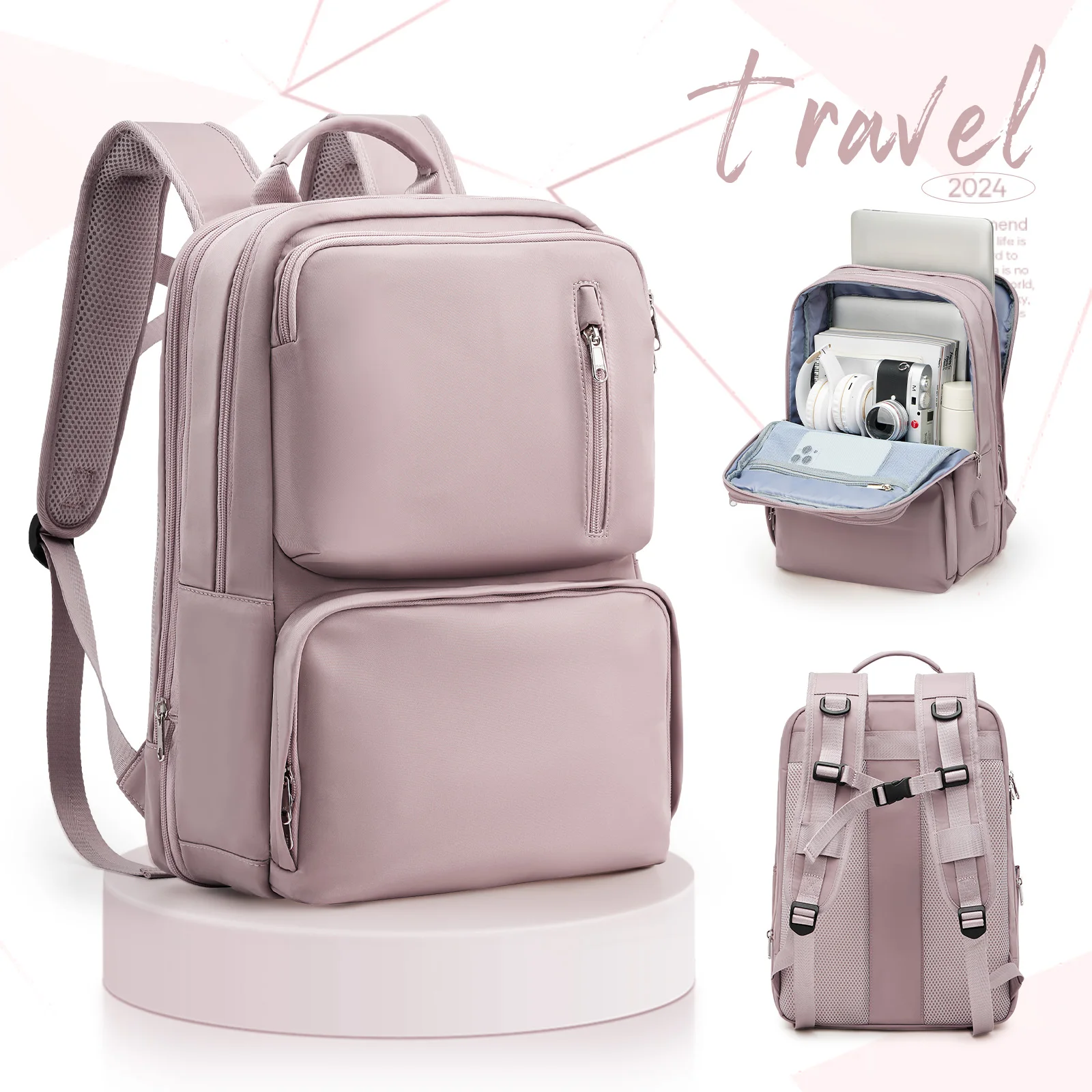
For many students, the ideal choice depends on their specific priorities, but those focused on long-term value and durability often find that vintage leather backpacks provide the perfect balance of durability, functionality, and timeless style that improves rather than deteriorates with use.
Student-Specific Considerations: Beyond Materials
The unique demands of student life require bags that adapt to changing needs throughout the academic journey:
Fluctuating Course Loads
The perfect student bag accommodates varying loads—from light days with just a laptop to heavy days requiring multiple textbooks. Look for designs with expandable capacity or compression straps that maintain a streamlined profile when not fully loaded.
Technology Integration
Modern students navigate between digital and physical materials constantly. Beyond basic laptop protection, consider features like:
– Cable management systems to organize charging cords
– Quick-access tablet sleeves for digital textbooks
– RFID-protected pockets for ID cards and electronic payment methods
– Power bank pockets with cable pass-throughs for charging on the go
Campus-Specific Challenges
Your specific campus environment affects the ideal bag features:
– Urban campuses with public transportation require security features like hidden pockets and slash-resistant materials
– Sprawling campuses necessitate comfortable carrying systems for long walks
– Campuses in rainy regions benefit from enhanced waterproofing
– Bike commuters need stability and reflective safety elements
Social-Professional Balance
College students often transition between casual classroom settings and professional environments like internships or interviews. The perfect leather backpack for campus achieves versatility through clean design that appears neither too casual nor overly formal.
Remember that your needs may evolve throughout your academic career—freshman requirements often differ from senior year when internships and job interviews become more common. Investing in a high-quality, adaptable bag accommodates this evolution.
14 Inch Leather Laptop Backpack, Brown Leather Backpack, Men's Leather Backpack, Vintage Leather Backpack
Price range: $177.28 through $199.12 Select options This product has multiple variants. The options may be chosen on the product pageDesigner Men's Backpack, Men's Leather Laptop Backpack, Men's Leather Work Backpack
Price range: $158.04 through $160.04 Select options This product has multiple variants. The options may be chosen on the product page15 Inch Leather Laptop Backpack, Leather Briefcase Backpack
$332.96 Select options This product has multiple variants. The options may be chosen on the product page17 Inch Leather Laptop Backpack, Men's Leather Travel Backpack, Men's Leather Work Backpack
Price range: $106.28 through $143.88 Select options This product has multiple variants. The options may be chosen on the product pageWomen's Leather Backpack, Women's Leather Work Backpack
Price range: $119.36 through $128.52 Select options This product has multiple variants. The options may be chosen on the product pageFull Grain Leather Backpack, Men's Leather Laptop Backpack, Men's Leather Work Backpack
$353.46 Select options This product has multiple variants. The options may be chosen on the product page
Buyer’s Guide: How to Identify Truly Durable Leather Bags
Armed with knowledge about materials and construction, use these practical techniques to evaluate leather bags before purchasing:
Visual Inspection
- Examine the leather closely – Quality leather has visible natural grain patterns with slight variations. Perfect uniformity often indicates corrected or lower-grade leather.
- Check stitching details – Look for tight, even stitches without skips or loose threads. Double stitching should appear at stress points.
- Inspect hardware connections – All hardware should be securely attached with reinforced stitching, rivets, or proper backing—never just glued.
- Assess edge finishing – Edges should be burnished smooth, painted with multiple coats, or folded and stitched—never raw.
Hands-On Tests
- The “push test” – Gently push against the leather. Quality full-grain recovers quickly without remaining creased.
- Weight assessment – Quality leather bags have substantial weight. Exceptionally light “leather” bags often use synthetic materials or very thin splits.
- Smell test – Natural leather has a distinctive, pleasant smell. Chemical or plastic odors suggest synthetic materials or heavy processing.
- Zipper test – Open and close zippers repeatedly. They should move smoothly without catching or separating behind the pull.
Red Flags to Watch For
- Extremely low prices for “genuine leather” (quality leather requires significant material cost)
- Perfect uniformity in color and texture throughout the entire bag
- Plastic-like feel or appearance despite leather claims
- Unfinished interior with exposed rough surfaces
- Glued rather than stitched components
- Hollow or lightweight hardware
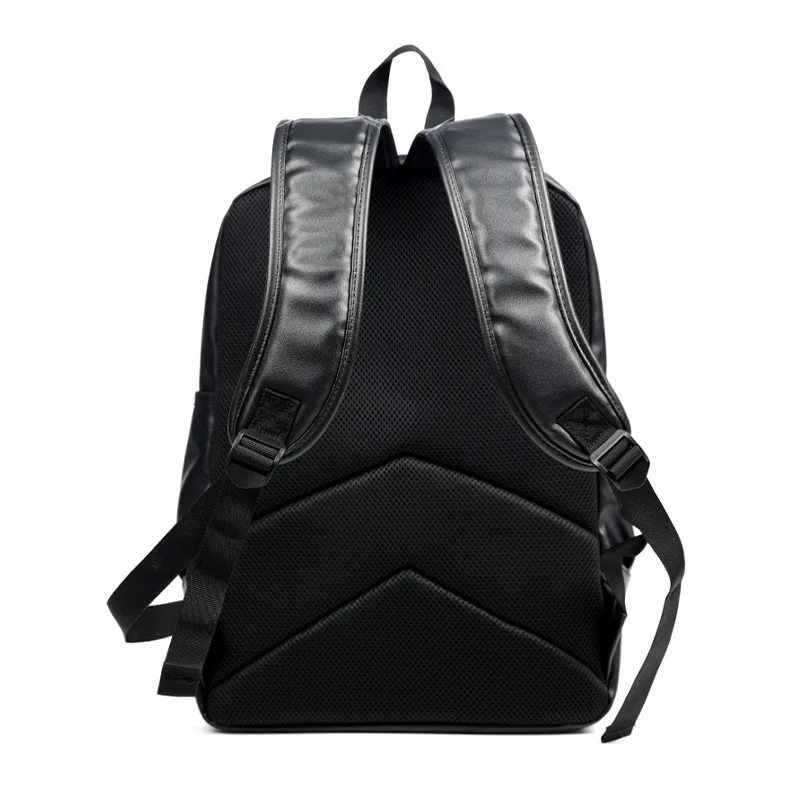
For those seeking professional environments after graduation, leather work backpacks offer durability with a design appropriate for both academic and professional settings.
When shopping online, look for detailed product descriptions that specifically mention leather grade, tanning method, and construction details. Vague descriptions like “genuine leather” without further specification often indicate lower-quality materials.
FAQ: Common Questions About Leather Bag Durability
Is leather truly waterproof for rainy campus environments?
Natural leather isn’t completely waterproof, but quality leather develops water resistance with proper treatment. For complete protection in heavy rain, look for bags with waterproof linings and covered zippers, or use a leather-safe water repellent spray.
How long should a quality leather bag last with daily student use?
A well-made full-grain leather bag should easily last through a full four-year degree program and beyond—typically 5-10+ years with proper care. Top-grain leather generally provides 3-6 years of daily service.
Can genuine leather be as durable as full-grain for student budgets?
While genuine leather can serve adequately for lighter use, it typically won’t withstand heavy daily student loads for more than 1-3 years. For tight budgets, a quality top-grain leather option often provides better long-term value than genuine leather.
Is leather too heavy for carrying around campus all day?
The weight varies significantly based on leather type and bag construction. Full-grain leather is naturally heavier than synthetics, but well-designed mens leather backpacks distribute weight effectively with padded straps and ergonomic designs that minimize fatigue.
Will a leather bag maintain its appearance throughout a four-year degree?
Quality leather doesn’t just maintain its appearance—it improves with age. While synthetic bags look progressively worse with wear, leather develops character and patina that many users find more attractive than the original finish.
Are there sustainable leather options for environmentally-conscious students?
Yes, vegetable-tanned leathers use natural processes with significantly lower environmental impact than chrome tanning. Additionally, leather’s longevity means fewer replacements and less waste over time compared to synthetic alternatives.
Final Analysis: Is a Leather Bag Right for Your Academic Journey?
After examining all aspects of leather bag durability for student life, several conclusions emerge:
Quality leather bags represent an investment in reliability during a critical period of your life when equipment failures can have significant consequences. The combination of material durability, repairability, and timeless design creates value that extends beyond simple calculations of cost.
For students who value long-term thinking, appreciate craftsmanship, and want equipment that improves rather than deteriorates with use, leather represents an excellent choice. The initial investment pays dividends through consistent performance, reduced replacement costs, and the confidence that comes from carrying a quality item.
However, leather bags require a commitment to basic maintenance and proper care. For students unwilling to perform simple upkeep or those who frequently lose or damage bags, less expensive alternatives might be more practical despite their shorter lifespan.
When making your final decision, consider not just your immediate needs but your trajectory through academic life and beyond. A quality leather bag adapts to your changing requirements, developing character that reflects your own journey from student to professional.
The ultimate measure of value isn’t just durability—it’s how well your bag serves your specific needs throughout your academic career. When selected with care and maintained properly, a quality leather bag becomes more than just a way to carry your books—it becomes a reliable partner in your educational journey.
